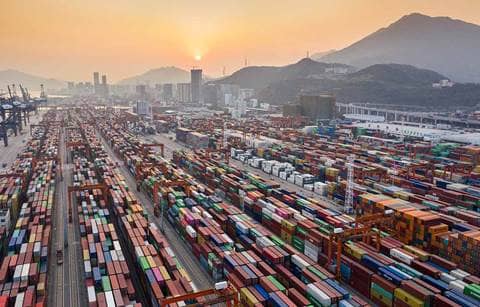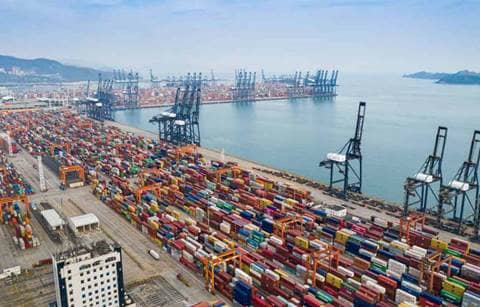Over the past six months, the unpredictability of shifting tariffs has left many companies hesitant to act, unsure of how trade policies would evolve. Now, key frameworks are in place, tensions are easing, and a “new normal” is taking shape. With tariff levels stabilizing across major U.S. trading partners and recent presidential decisions offering clearer direction, businesses can begin planning with greater confidence.
The following trade measures have played a significant role in establishing a more predictable environment.
- Trade agreements: U.S. trade agreements with the European Union, United Kingdom, Japan, South Korea, and others with established or significantly growing markets are contributing to an increasing sense of stability. Trading partners without a formal trade agreement have been notified of reciprocal tariff rates to take effect on Aug. 7, 2025.
- U.S.-China negotiations: Trade relations between the two economic superpowers are showing signs of stabilization amid structured negotiations. The U.S.-China trade de-escalation deal in May 2025 put a pause on the steep tariffs both countries had imposed to allow time for negotiations toward a more permanent resolution. The pause initially set to expire on Aug. 12, 2025, has been extended to Nov. 10, 2025.
- De minimis imports: The United States has suspended duty-free treatment for low-value imports (under $800) from all countries, closing a loophole that allowed these goods to enter the United States without tariffs under the de minimis exemption.
- U.S. negotiations with Mexico and Canada: While the majority of Mexico and Canada trade conducted with the United States is covered by the USMCA agreement, negotiations relating to non-USMCA-eligible products are continuing with both countries. Imposition of reciprocal tariffs against Mexico for non-USMCA products have been paused until October, and current messaging suggests the conversations are going well. Duties on non-USMCA goods imported from Canada have been established and guidelines are in place while negotiations continue.
- U.S.-India negotiations: Amid continuing trade negotiations, the United States implemented a 25% reciprocal tariff rate on Indian imports, effective Aug. 7, 2026. On Aug. 6, 2025, the United States announced an additional 25% tariff related to India’s purchase of Russian oil, scheduled to take effect on Aug. 27, 2025.
- Copper tariffs: A recent presidential proclamation clarifies U.S. policy and tariffs on copper imports under Section 232 of the Trade Expansion Act of 1962 and the Defense Production Act. An HTS code list has been provided, which is a major change as well.
Although further changes are expected, many businesses view the trade environment as increasingly stable and consider the emerging tariff and policy framework as a reliable starting point for informed decision-making.
Position your business for what’s next
With tariff rates for key trading partners now largely defined, it’s time to move from a short-term, “wait-and-see” mindset to proactive planning with a longer-term focus. With business financials increasingly influenced by tariff exposure, a critical first step is to assess how the tariffs will affect your cost structure and profit margins.
- Analyze your cash flow: What will your true production costs be based on the announced tariff rates? Will the tariffs increase the likelihood your company will need liquid assets in amounts that exceed your immediate cash flow? Do you have sufficient sources of cash and liquidity options in case you need to tap into them?
- Establish a deep understanding of your supply chain: To understand the true impact of tariffs, you must have excellent visibility into each tier of your supply chain — the more complex the product, the deeper into the supply chain you’ll need to go. You must be able to show where your materials originate and where subtier components are crossing borders. If this is difficult, now may be the time to make investments in required technology and support resources; this data and information is critical to making well-informed decisions in a complex tariff environment.
- Ensure your documentation up to standard: Due to an increased level of oversight and focus on compliance in the new tariff environment, full, accurate documentation is critical. HTS codes are being modified and updated on a regular basis, making it imperative that documentation is kept up to date with changes or modifications. If your company has paid IEEPA tariffs, ensure your documentation is sufficient to apply for a refund in the event that the Court of Appeals upholds the Court of International Trade ruling finding that the tariffs to be unconstitutional.
- Manage your currency risk: Currency exposure will be an increasingly important topic in the new trade landscape. Consider how you’ll track the major currencies to which your business is exposed and whether you’ll need to bring in experts to review your currency options.
With these fundamentals in place, you can begin to strategize frameworks that prioritize risk diversification, sustainability, and agility.
Get started today
Although ongoing changes are possible, the latest trade and tariff developments signal a shift toward greater stability. With key policies now taking shape, you can use today’s conditions as a reliable starting point for strategic decision-making.
To find out more about how emerging tariffs and trade policies apply to your specific situation, please reach out to get the conversation started.





